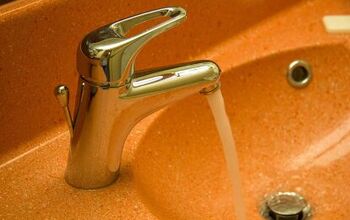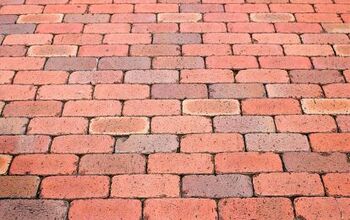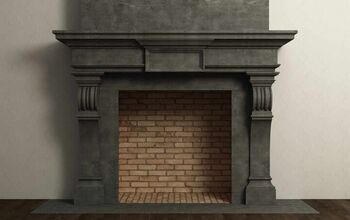How To Remove Tile Underlayment (Step-by-Step Guide)

When removing tile underlayment, it can be a pretty extensive process. It goes double for tile underlayment connected to concrete, which we will address with this guide. So, how do you remove tile underlayment?
- Make sure you have your tools ready
- Remove movable objects from the floor
- Cover the vents and anything that is not removable
- Smash a center tile with a hammer.
- Begin prying up tiles with a floor scraper or pry bar
- Remove the trim around walls (if needed)
Below, we will dig into some details behind this step by step process, ensuring you know what to do. We will also be digging into what to do if you find asbestos or bad subflooring.
Do You Need Ceramic or Porcelain Tile Repair Services?
Get free, zero-commitment quotes from pro contractors near you.

How To Remove Tile Underlayment (Step-by-Step)
Step One: Make Sure You Have Your Tools Ready
As always, your first step is to be sure that you have your tools ready. Check out our recommended list:
- Sledgehammer
- Pry bar
- Floor scraper
- Standard hammer
- Screwdriver
- Hammer and chisel set
- Tarp
- Shovel
- Shop vacuum
- Wheelbarrow
- Plastic wrap
- Painter’s tape
Step Two: Remove Movable Objects From Your Floor
You will not be able to access the floor without removing the things on top of it. Desks, bookcases, TVs, and anything imaginable can get in the way of this project. Be sure you have safe storage prepped ahead of time before beginning this project.
If storing stuff in nearby rooms, be sure also to leave yourself a walking path. This project is extensive, so you will likely need a minute to rest.
Step Three: Cover Vents And Anything You Cannot Move
Anything that you cannot move needs to be covered, especially ventilation systems.
First, cover your ventilation system in a layer of plastic wrap. Seal the plastic wrap with tape. Try to stick with tape that won’t leave behind wall residue, like painter’s tape.
For larger pieces of unmovable furniture, you will need to cover them up with a tarp. You can tie your tarp down with a long piece of rope. Do not use tape, as it will leave behind residue.
For example, old home radiators may be impossible to remove. However, it may be a good excuse for you to upgrade your home to remove radiators, but that is a different process.
If doing this in your bathroom, you will need to remove your toilet, which means you will have to shut your water off first. Remember that removing your toilet will give this room a direct line to the sewer. You may want to plug the drainage pipe with an old rag that you are willing to throw away later.
Step Four: Smash A Tile Near The Center
To start the meat of the project, you are going to need to smash a tile. You can typically begin this with the satisfying downward swing of a sledgehammer. You can also use a hammer and chisel.
The object of this step is to give yourself a point to start prying. This is where your chosen tile removal tool comes in handy. In this case, we suggest using a pry bar and a floor scraper.
Once you smash a tile, stick your pry bar in the available crack. Pry open your first set and do the same to adjacent tiles.
Try and keep old tiles in the same pile. If you have a friend, they can take a shovel and begin moving them to a wheelbarrow immediately. You will want them out of the way so that you can focus on getting this done quickly.
With more loose tiles, you can lose a floor scraper to try and remove multiples of them at a time. Be careful not to apply too much force to your floor scraper, as it can bend the metal scoop.
Step Five: Remove Floor Trim Or Baseboards
If you have trim connecting the wall to the floor, you will need those up as well. You can use the same pry bar for these, but you will likely need to use a standard hammer when removing nails.
You will do the same for any items screwed down, which is why you will need a Phillips or flathead screwdriver. Be ready to put down new trim after this, as the old set will likely be in an unusable condition.
If you want to reuse the old trim, be incredibly careful when removing it from the wall.
What If I Find Asbestos?
First, you can identify asbestos by looking for fibers. Because asbestos was in many aspects of old homes, the white fibers could be from floor to ceiling. Once you find them, please do not remove them like standard tiles.
Asbestos requires specialized training to handle. If you have never dealt with this chemical, we heavily recommend that you call a professional company. Trying to remove them will kick poisonous material in the air, possibly leading to lung complications and death.
Some people will suggest that you reseal it with epoxy. However, your ultimate goal should be the removal of this material. Keeping any asbestos in your home can be incredibly dangerous.
What If I Want To Reuse The Underlayment?
If you want to remove the underlayment for elsewhere, this process is going to take much longer. Be sure to set aside multiple days for this long-term project.
To remove the tile, you will need to apply a heat gun to loosen the underlying adhesive. Once the adhesive is hot again, you will be able to lift them easily. For tiles more sensitive to heat, you will need to smash one tile. For the remaining, try and get as much leverage as possible for other tiles.
Breaking one tile will make it easier to place your putty knife or floor scraper to pry them. Don’t be afraid to waste one to save a lot of them. You can sometimes remove the underlayment and the tile in a single motion. However, this is the most tricky option, as the tile will have extra weight.
How To Remove Glue Under Tile
Attempt to remove the bulk of the tile adhesive with a floor scraper. That should take care of most of it, but there is always something left behind.
You can add a brush to your power drill for a more thorough removal of those stubborn sections. They do make brushes specifically for drill heads, which can be to remove adhesive.
It may be necessary if you plan to save the underlayment, as that will most likely be where the adhesive ends up.
How To Remove Tile Underlayment From Concrete
In many cases, concrete is going to be beneath your tile underlayment. While it may make for some challenging floor tiles, it does not change the process.
Use a sledgehammer to break the first piece of tile and a pry bar to lift those pieces. If you have any tricky sections, bring the sledgehammer back for a second go. Bring the floor scraper to more fragmented pieces, picking those up with a shovel.
Concrete doesn’t add to the process at all; it simply increases the number of times you need to smash tiles.
Do You Need Ceramic or Porcelain Tile Repair Services?
Get free, zero-commitment quotes from pro contractors near you.

Related Questions
What If I Need To Remove The Subfloor?
The subfloor is the bottom-most level of your flooring. Typically, your subfloor is plywood, which is relatively easy to pry up. If you plan on replacing the subfloor, be ready to remove a lot of nails.Unless you see a lot of rot or poor condition, this is not necessary. However, refreshing a subfloor may not be a terrible idea if you have already budgeted for it.If you want, it also allows you to strengthen your subfloor with an additional layer of plywood. Check out our guide on adding that extra layer of plywood.
Can I Retile Over The Old Underlayment?
Having multiple layers of flooring over each other can become overkill. Underlayment can age just like tile, so you will want to decide based on the underlayment’s condition.If the underlayment is jagged and misaligned, do not reuse it. You need a clean, flat service to lay tile. Anything misaligned will result in uneven tile. If you find asbestos, you definitely need to remove it. Call a professional company if you do not have experience in this area.

I'm a guy who becomes the expert of whatever I stumble upon, writing-wise. I've written tons about cool home products, home improvement, and smart technology in the home. I'm also the proud father of a kiddo born on new years, making my holidays very busy.
More by Eli Smith















![Standard Dining Room Table Dimensions [for 4, 6, 8, 10 and 12 People]](https://cdn-fastly.upgradedhome.com/media/2023/07/31/9074335/standard-dining-room-table-dimensions-for-4-6-8-10-and-12-people.jpg?size=350x220)











